Take me back to Licensed Pyrotechnician Training
What type of explosives are fireworks?
Low Explosive
An explosive that utilizes chemical formulas that burn or deflagrate when a certain amount of initial energy is applied to it. Fireworks fall into this category. The rate at which the pyrotechnic composition burns is mostly dependent upon the rate at which the composition can transfer heat from one layer of itself to another. When a composition’s rate of reaction is very slow (relative to the speed of sound), it is known as deflagration. Examples of a pyrotechnic composition that “deflagrate” would be a star in an aerial shell, flares, or black powder. Burn rate is also highly dependent on pressure and temperature. Therefore, when a pyrotechnic composition is confined, its burn rate is accelerated. When the reaction is sped up drastically due to increases in pressure and temperature, such as in the case of the burst charge in an aerial shell, it becomes explosive but is still subsonic and is still deflagration. In an aerial shell, the temperature and pressure build-up while the composition inside of it is burning. Once the pressure from the hot gases created during the reaction reaches a certain point, the casing will fail, rupturing outward, yielding an explosion or explosive release of that energy.

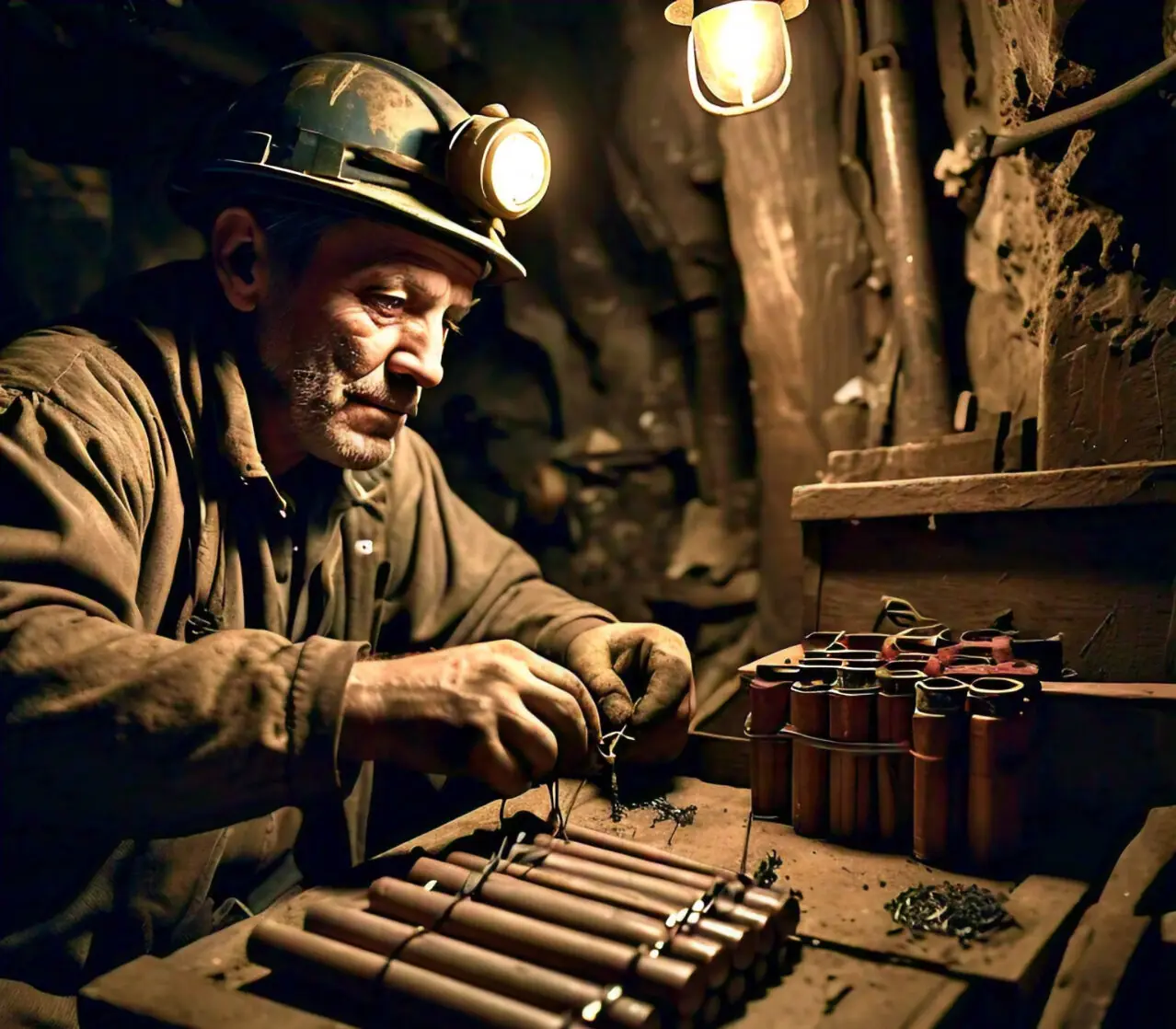
High Explosive
A device in which the explosive composition will detonate once initiated. High explosives can be initiated in several manners. The typical method in which high explosives are initiated is through a blasting cap, which sends a shock wave into the material. The other method of initiation is deflagration to detonation. An example of this process is seen in composition that has a great ability to transfer heat and its high heat of reaction (thermal energy produced when it combusts). Since the rate at which a composition burns is dependent upon how well it can transfer heat, this is a very important property. Once ignited, if the flame front in a composition reaches supersonic velocities it creates a shock wave in the composition. Once a shock front is accomplished, the rate at which the composition burns is no longer dependent on how well it can transfer heat (as in the case of a low explosive). The burn rate is now dependent upon how well the explosive composition can transfer the detonation wave (shock wave) through itself. Most blasting caps are created using a composition that undergoes a deflagration to detonation process to allow a simple spark to eventually lead to the shock wave needed to initiate the high explosive. The desired effect is for the shock wave to be introduced to the main high explosive charge. A detonation releases a great amount of energy in a very short period of time, hence the reason they have a “sharper” (caused by the shock wave) boom.
U.S.D.O.T. Explosive Designations
Hazardous Materials Transportation categories for each type of explosive, as set by the United States Department of Transportation (USDOT).
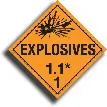
1.1*
This designation is used for explosives that have a mass explosion hazard. In other words, the entire load can explode at once if one device is initiated. Typically high explosives like dynamite and TNT, fall into this category.
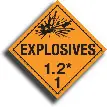
1.2*
Explosives that don’t have a mass explosion hazard as in the case of 1.1* explosives, but do have a projection hazard.
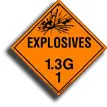
1.3*
Explosives that don’t have a mass explosion hazard, but are a fire hazard, and either a minor blast hazard or a minor projection hazard, or both. With a “G” attached in place of the * behind 1.3, is typically the category that display fireworks fall into. These types of fireworks were previously known as “Class B.”
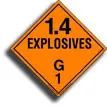
1.4*
Explosives that only present a minor explosion hazard which are generally confined to the package, and have no explosion fragments of significant size or range. With a “G” attached in place of the * behind 1.4, this would be the category that consumer fireworks (the kind you buy at a fireworks stand or store on the 4th of July) would fall into. These types of fireworks were previously known as “Class C.”
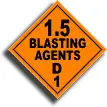
1.5D
Very insensitive explosives. These explosives can have a mass explosion hazard, but due to their insensitivity, the probability of explosion under normal transportation conditions, even in the event of burning, is very small.
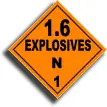
1.6N
Extremely insensitive explosives. These explosives have no mass explosion hazard. These substances are so insensitive, that the probability of accidental ignition is negligible.
*Explosive Compatibility Groups
These codes replace the * on the placards shown above, depending on what you are transporting.
“A“: Primary explosive substance.
“B“: Article containing a primary explosive substance and not containing two or more effective protective features. Some articles, such as detonators for blasting, detonator assemblies for blasting, and primers, cap-type, are included, even though they contain primary explosives.
“C“: Propellant explosive substance or other deflagrating explosive substance or article containing such explosive substance.
“D“: Secondary detonating explosive substance or black powder or article containing a secondary detonating explosive substance, in each case without means of initiation and without a propelling charge, or article containing a primary explosive substance and containing two or more effective protective features.
“E“: Article containing a secondary detonating explosive substance without means of initiation, with a propelling charge (other than one containing flammable liquid, gel, or hypergolic liquid).
“F“: Article containing a secondary detonating explosive substance with its means of initiation, with a propelling charge (other than one containing flammable liquid, gel, or hypergolic liquid) or without a propelling charge.
“G“: Pyrotechnic substance or article containing a pyrotechnic substance, or article containing both an explosive substance and an illuminating, incendiary, tear-producing, or smoke-producing substance (other than a water-activated article or one containing white phosphorus, phosphide, or flammable liquid or gel or hypergolic liquid).
“H“: Article containing both an explosive substance and white phosphorus.
“J“: Article containing both an explosive substance and flammable liquid or gel.
“K“: Article containing both an explosive substance and a toxic chemical agent.
“L“: Explosive substance or article containing an explosive substance and presenting a special risk (e.g., due to water-activation or presence of hypergolic liquids, phosphides, or pyrophoric substances) needing isolation of each type.
“N“: Articles containing only extremely insensitive detonating substances.
“S“: Substance or article so packed or designed that any hazardous effects arising from accidental functioning are limited to the extent that they do not significantly hinder or prohibit firefighting or other emergency response efforts in the immediate vicinity of the package.
Checking a Fireworks Truck
Re-Packing Live Fireworks




